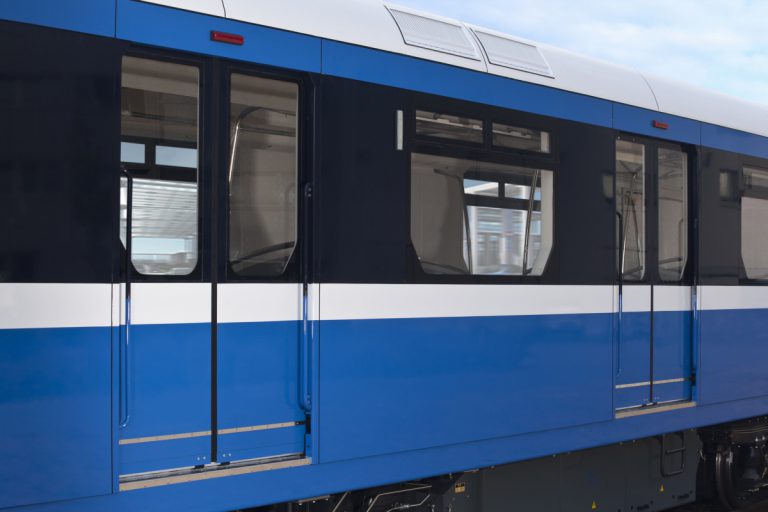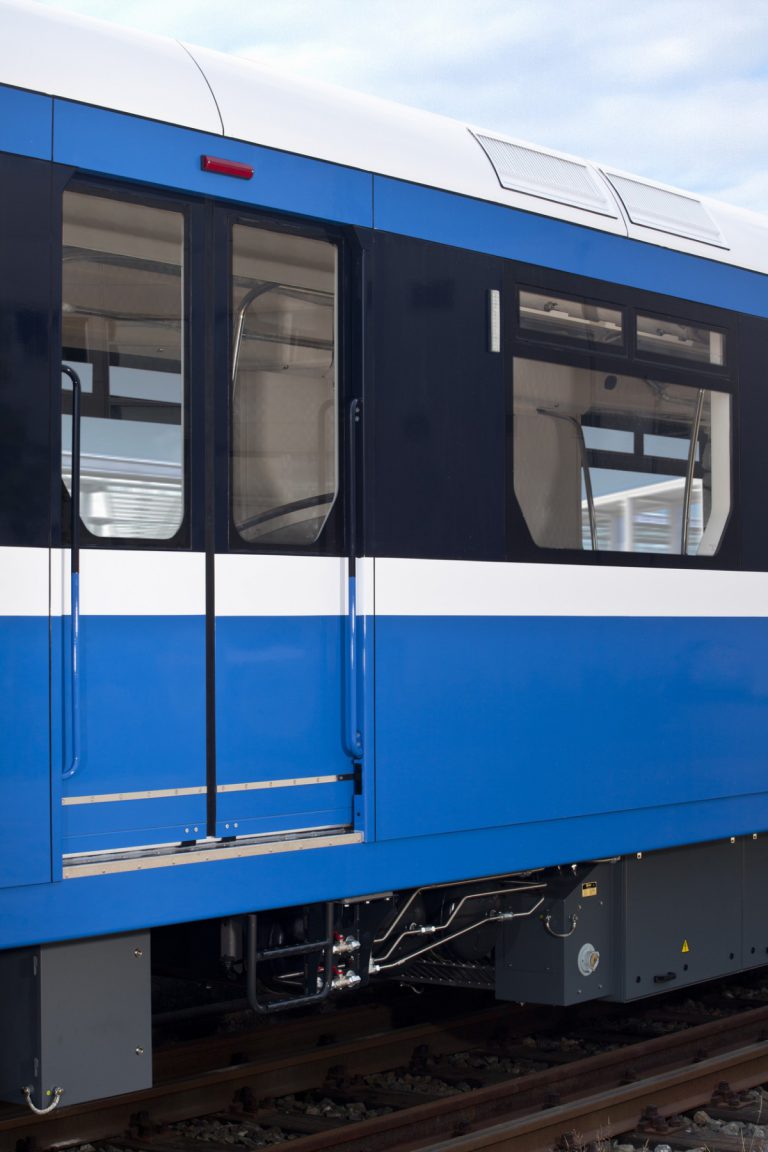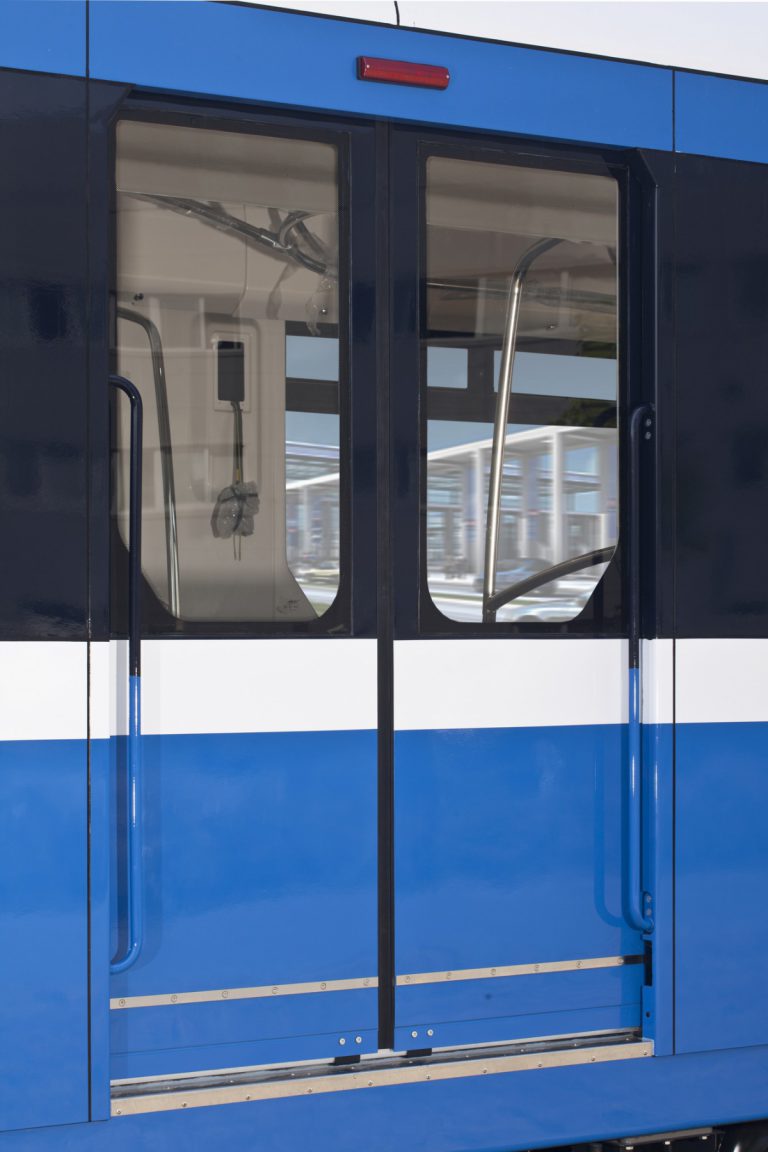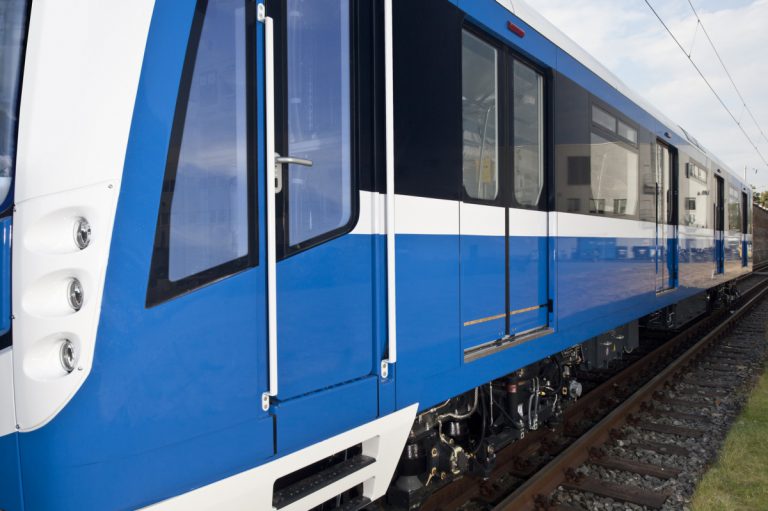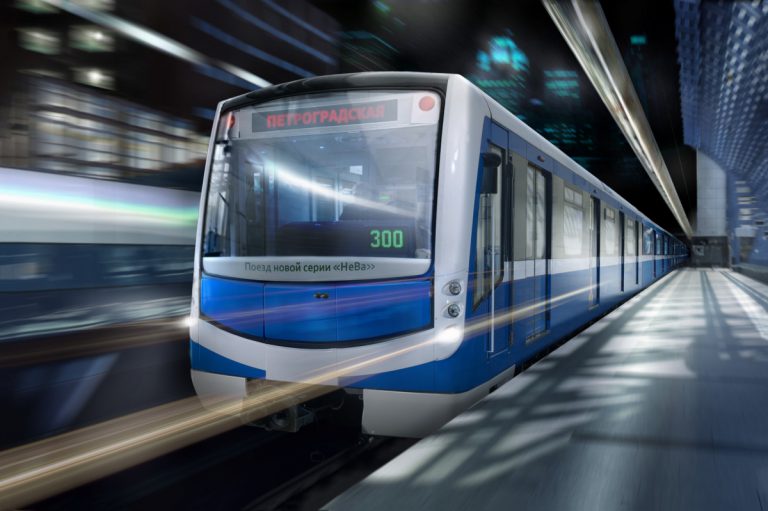Metro NěVa
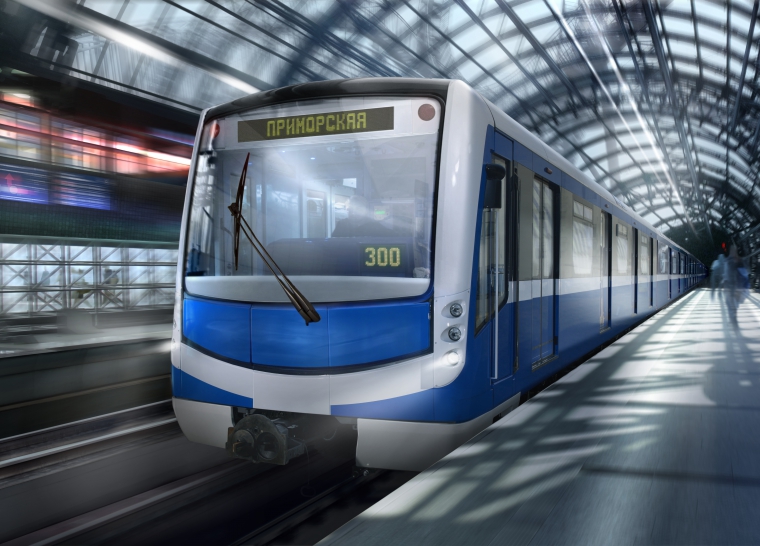
The basic configuration for St. Petersburg’s new generation metro is a six-car variant using eight traction bogies and four conventional bogies.
Alternative metro trains can be made up out of a front engine vehicle and various combinations of integrated motorized vehicles and integrated non-motorized vehicles (from three to eight-car train units). 66% of the axles are equipped with traction drive.
Metro cars and their individual components are designed to be high-performing, reliable, and with an emphasis on low weight. This, along with high energy efficiency, results in low operating costs for the entire life of the units. There is easy access to individual devices and components of the car for maintenance purposes.
More information
Gallery
Parameters
Arrangement of the metro train
Mh-M-T-T-M-Mh
Arrangement of the wheel set
B'oB'o+B'oB'o+2'2'+2'2'+B'oB'o+B'oB'o
Material of car cabinets
steel with increased corrosion resistance
Track gauge
1 520 mm / 1 432 mm
Maximum speed
90 km/h
Power voltage
750 V DC / 3rd rail
The vehicle length over couplings
116 540 mm
Width of the cars
2 700 mm
Floor height
1 150 above TK
Bogie weight traction / common
6 500 kg / 4 300 kg
Wheelbase of the bogie
2 100 mm
Wheel diameter maximum / minimum
850 mm / 770 mm
Asynchronous traction engine output
167 kW
Weight of the set of train cars mh / m / t
29,9 t / 29,5 t / 22 t
Weight of the empty train unit / maximum weight
162,8 t / 274,38 t (8 passengers/m2)
Maximum axle load
12,5 t
Number of seats
276 persons
Total capacity with 8 persons/m2
1 594 persons
Number of doors on the car
8
The smallest radius of curvature on the route /
100 m / 60 m
Maximum ascent
60 ‰
Maximum start acceleration
1,3 m/s2
Maximum braking rate
1,4 m/s2


